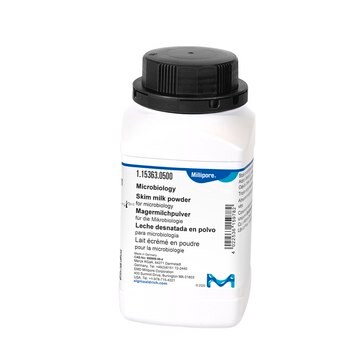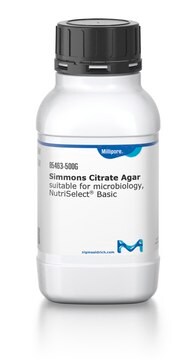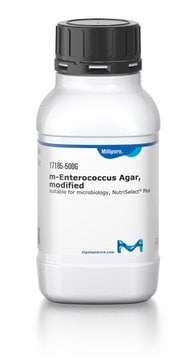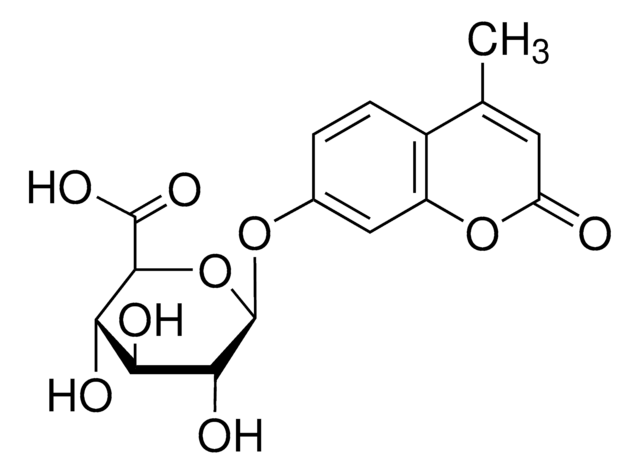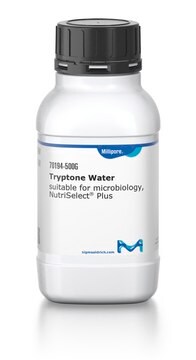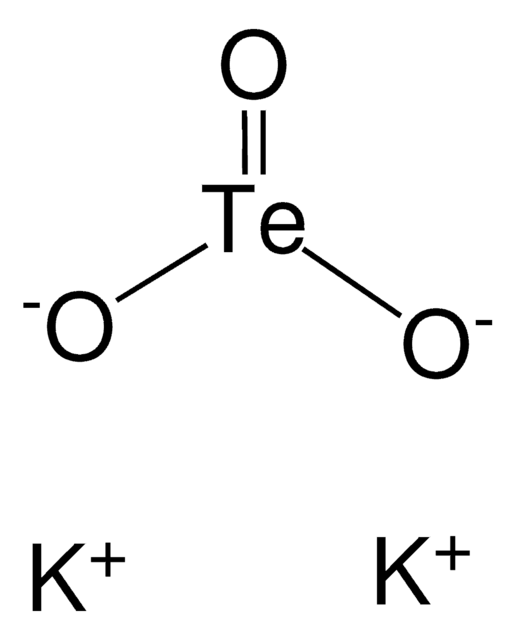Key Documents
51463
Urea Broth
NutriSelect® Basic, suitable for microbiology
About This Item
Polecane produkty
sterylność
non-sterile
Poziom jakości
linia produktu
BioChemika
Postać
powder
okres trwałości
limited shelf life, expiry date on the label
skład
dipotassium hydrogen phosphate, 9.5 g/L
phenol red, 0.01 g/L
potassium dihydrogen phosphate, 9.1 g/L
urea, 20 g/L
yeast extract, 0.1 g/L
producent / nazwa handlowa
NutriSelect® Basic
metody
microbe id | specific enzyme detection: suitable
microbiological culture: suitable
pH końcowe
6.8±0.2 (25 °C)
Zastosowanie
clinical testing
environmental
food and beverages
microbiology
przydatność
nonselective and identification for Enterobacter spp.
nonselective and identification for Escherichia coli
nonselective and identification for Klebsiella spp.
nonselective and identification for Proteus spp.
nonselective and identification for Salmonella spp.
nonselective and identification for coliforms
nonselective and identification for enterobacteriaceae
Zastosowanie
Uwaga dotycząca przygotowania
Inne uwagi
Przypis
The designations basic, plus, or prime are added to indicate the quality control level, from basic quality control to standard QC plus to prime for full regulatory compliance.
Informacje prawne
Kod klasy składowania
11 - Combustible Solids
Klasa zagrożenia wodnego (WGK)
WGK 1
Temperatura zapłonu (°F)
Not applicable
Temperatura zapłonu (°C)
Not applicable
Środki ochrony indywidualnej
Eyeshields, Gloves, type N95 (US)
Wybierz jedną z najnowszych wersji:
Masz już ten produkt?
Dokumenty związane z niedawno zakupionymi produktami zostały zamieszczone w Bibliotece dokumentów.
Klienci oglądali również te produkty
Produkty
Sigma-Aldrich.com presents an article concerning Differentiation of Escherichia coli from coliforms.
Salmonella contamination is the second leading cause of food-borne illness worldwide. Controlling outbreaks of Salmonella is an important task for food regulators, restaurants and the food industry in general. The Salmonella family includes over 2,300 serotypes of bacteria, but two types, Salmonella enteritidis and Salmonella typhimurium, are responsible for about half of all human infections. Most outbreaks of Salmonella are traced back to dairy, poultry and meat products, but Salmonella can grow on nearly any food. Chicken, eggs and their derivative products are particularly high risk.
Salmonella, z ponad 2300 serotypami, powoduje połowę chorób przenoszonych przez żywność, często z nabiału, drobiu i jaj.
Nasz zespół naukowców ma doświadczenie we wszystkich obszarach badań, w tym w naukach przyrodniczych, materiałoznawstwie, syntezie chemicznej, chromatografii, analityce i wielu innych dziedzinach.
Skontaktuj się z zespołem ds. pomocy technicznej



